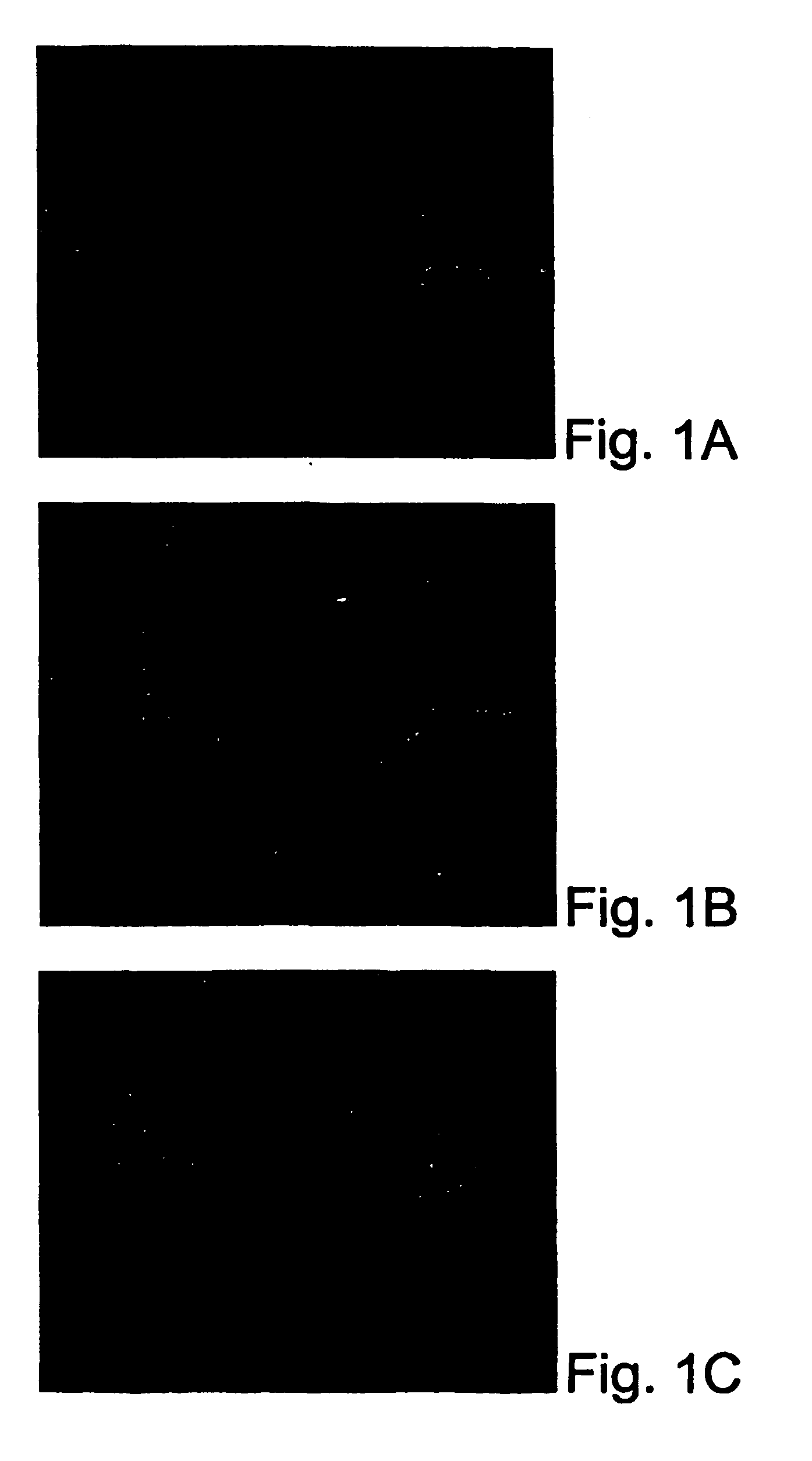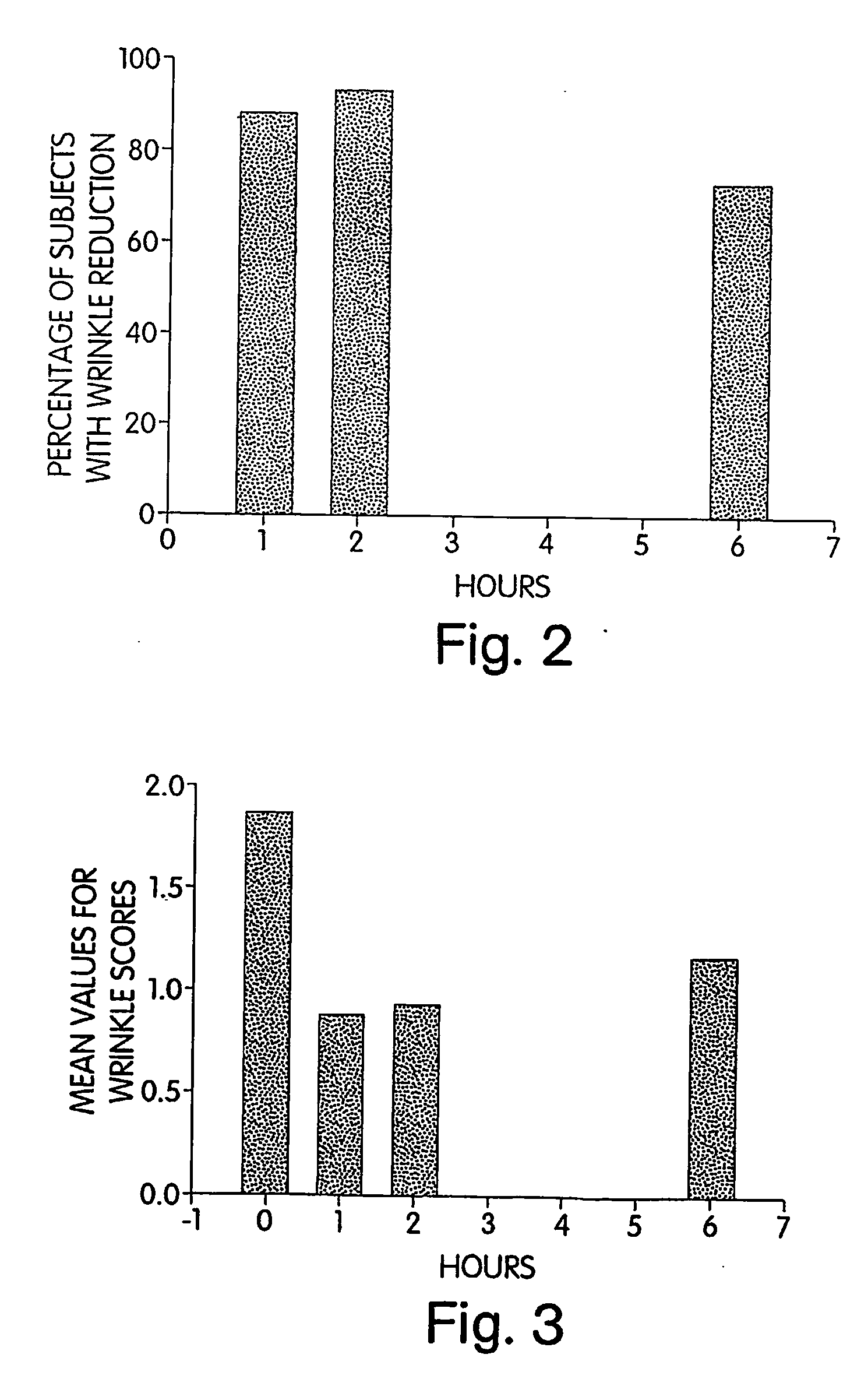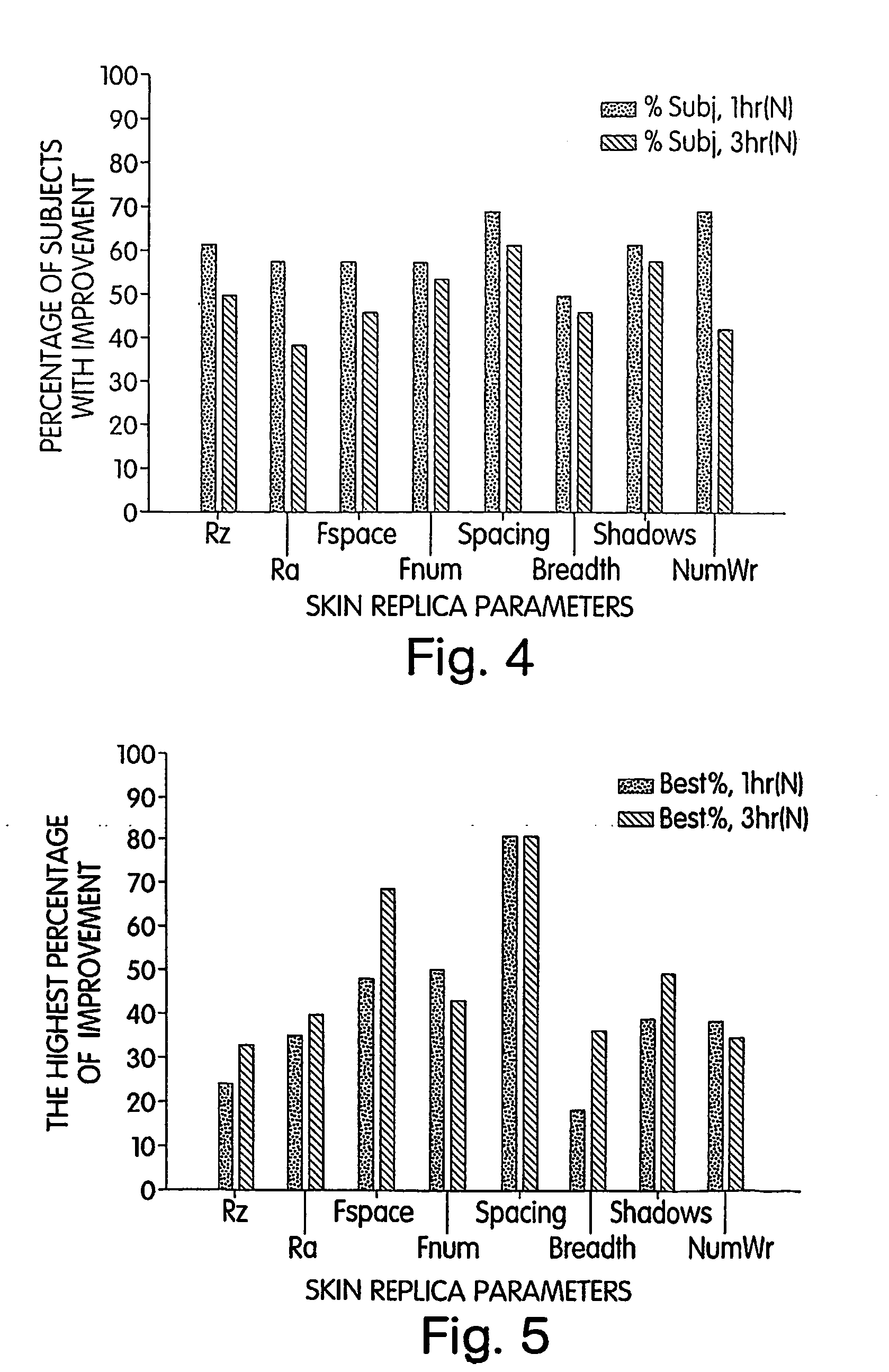Methods of treating involuntary facial spasms and facial wrinkles
a facial spasm and involuntary technology, applied in the direction of antibacterial agents, drug compositions, peptide/protein ingredients, etc., can solve the problems of social embarrassment and functional visual loss, “crossing wire” phenomenon, and block the release of acetylcholine, so as to prevent botulism and reduce the therapeutic effect.
- Summary
- Abstract
- Description
- Claims
- Application Information
AI Technical Summary
Benefits of technology
Problems solved by technology
Method used
Image
Examples
example 1
Stability Test of Cream I
[0201] To test stability, cream I was subjected to a stability test according to industry standard protocols. The cream was stored at 45° C. for twelve (12) weeks and the result was found to be satisfactory. While there was no emulsion separation at most of the stability stations, slight yellowing and subtle separation occurred at 45° C. between the sixth and twelfth week. However, this is far superior to the commercial magnesium sulfate cream, which manifested emulsion separation at 45° C. after three days. In addition, cream I underwent through five freeze / thaw cycles with no emulsion separation.
example 2
Safety Test of Cream I
[0202] Cream I was subjected to a safety test according to industry standard protocols. To determine the irritation and / or sensitization potential of the cream I, a repeated insult patch test (RIPT) was carried out as follows. In the induction phase, a total of 9 Parke-Davis Readi-Bandage occlusive patches containing the cream were applied to the back of each subject over a period of 3 weeks. After a rest period of 2 weeks, a challenge patch was applied to a previously unpatched (virgin) test site (challenge phase). The site was scored 24 and 72 hours after the challenge.
[0203] A total of 55 subjects (9 males and 46 females, 18-67 years old) participated in the study. 54 subjects (54 / 55) satisfactorily completed the test, whereas one subject (1 / 55) discontinued for personal reasons unrelated to the study. Based on the scores ranging from 0 to 4 (0 being no evidence of any effect and 4 the most severe skin reactivity), there was no skin reactivity (Score 0) on...
example 3
Topical Use of Cream I for Anti-Wrinkle Effect
[0204] The efficacy of cream I was tested in clinical studies. The studies were approved by an independent institution review board (IRB). In a preliminary study, cream I was applied to the skin area around facial frowns. Pictures were taken pre-treatment and post-treatment on hourly basis. As shown in FIG. 1, facial frown lines were significantly reduced just two hours after applying cream I (Panel B) and kept improving by three hours (Panel C) as compared to untreated frown lines (Panel A). In addition, more smooth skin and relaxed muscle were observed after application (FIG. 1). Compared to Botox injection, topical use of cream I delivered its effect much faster and did not cause any numbness or stiffness.
[0205] Following the preliminary study, a phase I study was implemented to determine if the use of cream I decreased, within hours, the appearance of wrinkles at the forward / frown line area in a panel of 30 women (ages from 30-60 y...
PUM
| Property | Measurement | Unit |
|---|---|---|
| molecular weights | aaaaa | aaaaa |
| height | aaaaa | aaaaa |
| time | aaaaa | aaaaa |
Abstract
Description
Claims
Application Information
 Login to View More
Login to View More - R&D
- Intellectual Property
- Life Sciences
- Materials
- Tech Scout
- Unparalleled Data Quality
- Higher Quality Content
- 60% Fewer Hallucinations
Browse by: Latest US Patents, China's latest patents, Technical Efficacy Thesaurus, Application Domain, Technology Topic, Popular Technical Reports.
© 2025 PatSnap. All rights reserved.Legal|Privacy policy|Modern Slavery Act Transparency Statement|Sitemap|About US| Contact US: help@patsnap.com



